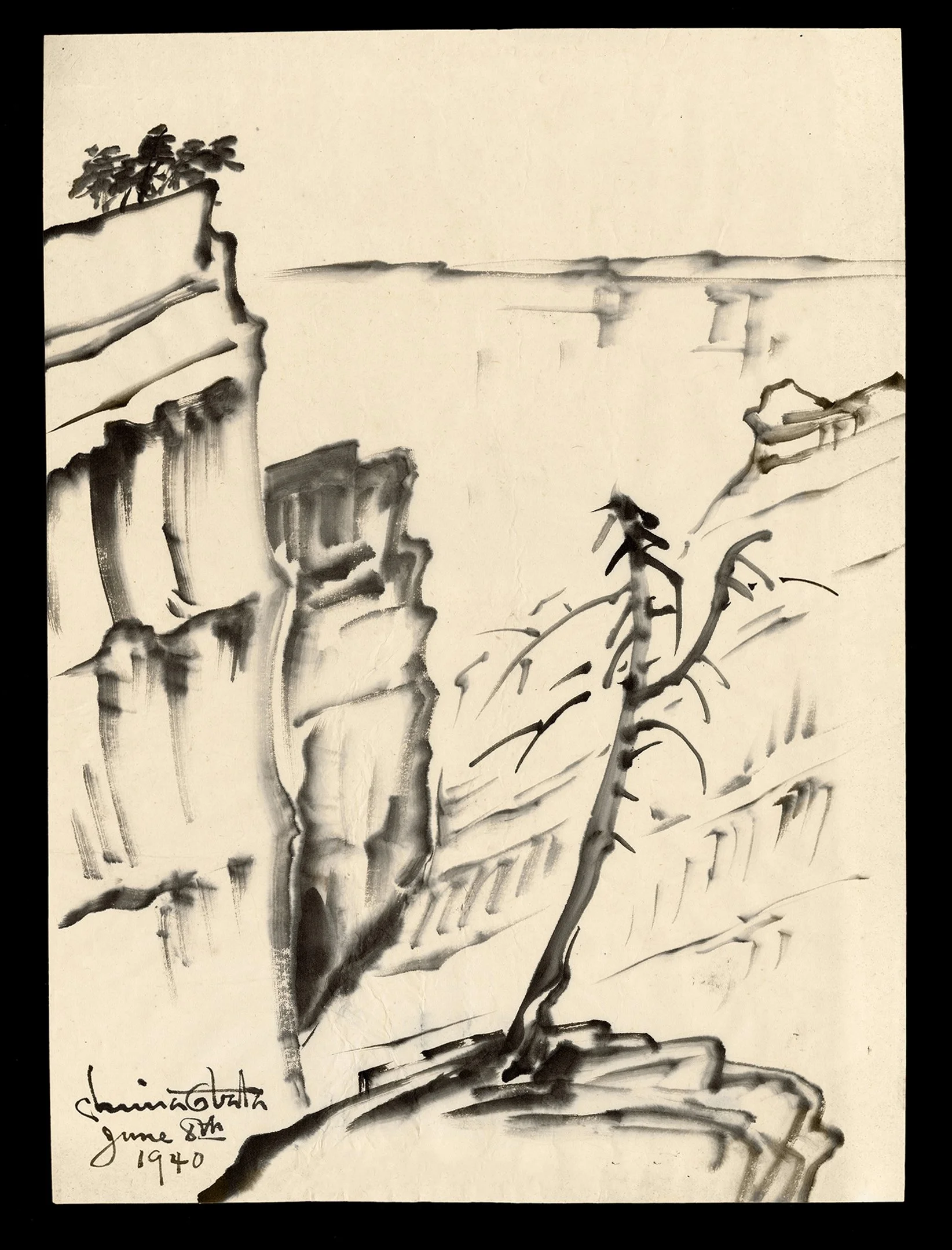<b>GRAND CANYON</b> / Chiura ObataJune 8, 1940$12,000</em>
Grand Canyon
Chiura Obata (1885-1975)
MEDIUM: Sumi on paper
DATE: June 8, 1940
DIMENSIONS: 20 ½ x 14 3/4 inches
CONDITION: Excellent, no problems to note
PROVENANCE: Obata Family Collection
$12,000.00
Contact us to purchase
Grand Canyon
Chiura Obata (1885-1975)
MEDIUM: Sumi on paper
DATE: June 8, 1940
DIMENSIONS: 20 ½ x 14 3/4 inches
CONDITION: Excellent, no problems to note
PROVENANCE: Obata Family Collection
$12,000.00
Contact us to purchase
Grand Canyon
Chiura Obata (1885-1975)
MEDIUM: Sumi on paper
DATE: June 8, 1940
DIMENSIONS: 20 ½ x 14 3/4 inches
CONDITION: Excellent, no problems to note
PROVENANCE: Obata Family Collection
$12,000.00
Contact us to purchase
Details
Chiura Obata, a pioneering Japanese-American artist, was born in Japan in 1885 and immigrated to the United States in 1903, eventually settling in California. His early training in traditional Japanese art was expanded upon by exposure to American modernism, allowing him to blend Eastern techniques with Western innovation. Obata’s deep appreciation for the natural beauty of the American landscape, particularly Yosemite Valley, became a central theme in his work, resulting in both paintings and woodblock prints that captured the grandeur and tranquility of these iconic sites.
His career, however, took a harrowing turn when, during World War II, Obata and his family were forcibly relocated to an internment camp for Japanese-Americans. Even under these dire conditions, Obata’s resilience as an artist shone through, and he continued to document the plight of his community through his sketches. In recent years, his work has received renewed attention, with major museum exhibitions celebrating his invaluable contributions to both American and Japanese art.
In this striking sumi-e composition, a wind-swept barren tree stretches defiantly upward against the majestic, rock-faced cliffs of the Grand Canyon. Likely executed on location, the work showcases the raw beauty of one of America’s most iconic landscapes, rendered entirely in black sumi ink. Obata masterfully blends Eastern traditions with the grandeur of the American West, evoking the spirit of Zenga painting and Chinese literati landscapes through his confident brushwork and skillful use of negative space. The sparseness of the composition adds a sense of serenity and strength to the scene.
This sumi-e painting is a study for a finished silk painting, also featured in this exhibition. The sumi work presents the view from the perspective of the tree, while the final silk painting reveals a broader panoramic view of the canyon. Both pieces prominently feature the same tree, which remains in the canyon to this day.
Connoisseur's Note
This exceptional painting by Chiura Obata beautifully merges Eastern and Western traditions. By choosing the Grand Canyon—a quintessentially American landscape—as his subject, Obata not only captures the vast beauty of this national treasure but also infuses it with the elegance and subtlety of traditional Japanese sumi-e. Executed in 1940, this painting is not only a striking visual representation of nature but also a poignant historical document.
Created just before Obata and his family were interned, this work reflects a rare moment in which the artist, at the height of his career as a cross-cultural figure, presents an iconic American scene through the lens of his Japanese heritage. The painting serves as both an artistic bridge between East and West and a powerful statement of Obata's identity during a period of intense upheaval. Its significance is undeniable, offering invaluable insight into the resilience of an immigrant artist during a turbulent chapter in American history.
This work is in excellent condition and bears the artist's signature and date in the lower right corner, further enhancing its value.







